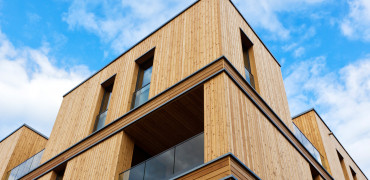The healthcare sector is responsible for nearly 10% of all greenhouse gases which equates to hundreds of millions of tons worth of carbon each year.
With their 24/7 lighting, heating and water needs they use up to 5 times more energy than the top hotels.
Increasingly hospitals are now revamping with a different goal in mind, energy efficiency.
This in turn brings many advantages least of all being that it can boost their bottom line.
According to the World Health Organisation, one fourth of the diseases experienced by the world’s population can be attributed to environmental exposures.
It has long been believed that better buildings help patients heal faster.
Moves towards sustainability
Hospitals are increasingly integrating the concept of sustainability in their corporate strategies and a sustainable health care system is achieved by delivering high quality care and improved public health without the need to exhaust our natural resources or damaging our ecological system.
More and more facilities are phasing out fossil fuels and replacing them with renewables, such as solar panels and heat pumps.
By installing high efficiency windows heating and cooling loads are reduced. Automatic solar shades utilise the power of natural light which adds warmth in winter and cuts the use of air conditioning in summer.
Hospitals are installing motion sensors to control lighting and replacing fluorescent lighting with LED bulbs eliminates the hazards of mercury and other metals.
When hospitals choose green cleaning products they avoid exposure to toxic chemicals.
Even sourcing locally grown fruits and vegetables patients and staff are increasingly healthy, and the carbon footprint is reduced.
Better buildings help heal
Sustainability is inextricably linked in all ways to the future of healthcare. It has long been believed that better buildings help patients heal faster.
Green building practices are continually transforming healthcare, design, construction and operations. These practices are not only saving money but also making the hospital purpose more effective.
Studies have shown that the environment that we create around us has profound effects on the human psyche.
Sustainable design and construction involves creating structures using processes that are environmentally friendly and resource efficient.
As more and more hospitals demonstrate that sustainable architecture not only improves the bottom line but benefits the health of patients and workers, we can expect to see new and innovative hospital designs in the near future. Sustainable design and construction involves creating structures using processes that are environmentally friendly and resource efficient
Going green is now easier to justify
The cost of green building is becoming easier to justify, it promotes reduced building expenses and improves healthcare objectives.
Planning for such a project can include using sustainable building materials or adding more green space in and around the hospital environment.
There is a growing awareness of the therapeutic benefits of good hospital design which can influence clinical outcome, patient satisfaction and the performance and wellbeing of staff.
Through the integration of environmentally sustainable operations hospitals can cut their energy costs whilst at the same time creating a more nurturing environment for patients and staff alike.
It is possible with clever planning, construction and operations to reduce a carbon footprint without compromising on safety or hygiene
LEED by example
One of the world’s best examples of sustainable healthcare is Dell Children’s medical centre in Texas, which is the first hospital to achieve a platinum level LEED accreditation (Leadership in Energy and Environmental Deign).
Heat recovery is optimised, clever ventilation and light design has been implemented and daylight is used to the maximum.
All these components allow the centre to cut energy costs in half.
The clever use of natural light, access to fresh air, sunlight, paperless record keeping, energy conserving boilers, green roofs are all eco-friendly initiatives that can be more widely adopted.
Other leading hospitals
Great Ormond Street Hospital in London is currently under redevelopment, Llewelyn Davies, London architects have incorporated a range of green features. These include a reversible under floor heating system that can both heat and cool the hospital and a generator that together with a waste heat recovery system will help offset an estimated 20,000 tons of carbon dioxide emissions per year.
The Johnston Memorial Hospital in Virginia was awarded LEED Gold thanks to its many eco-friendly features. The project saw over 3/4 of the construction waste being recycled. While green building materials included low emission paint and FSC certified wood. Water saving fixtures help reduce usage by 40%, energy efficient chillers, boilers and insulation units and motion sensor lights contribute to power saving.
The examples are extensive.
With the increasingly innovative advances in both construction and technology the opportunity for healthcare to become sustainable and green are endless. Hospitals of tomorrow will now focus on wellness and become spaces for recuperation, wellbeing and healing. The hospital and healthcare industry is expected to be one of the leading sectors to witness a substantial growth in green construction.
Kirsty Hammond is editor of Specifier Review




